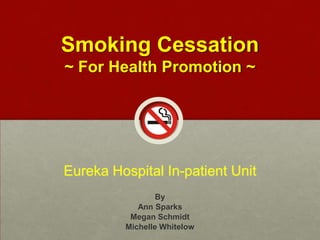The document discusses the history and implications of smoking, including the glamorization of tobacco use and its devastating health effects, particularly in nurses, who often have higher smoking rates. It highlights the importance of smoking cessation education during hospitalization as a crucial opportunity for intervention and outlines various resources and support systems available for quitting. Furthermore, it addresses common myths about quitting smoking, emphasizing the need for healthcare providers to encourage cessation efforts actively.















